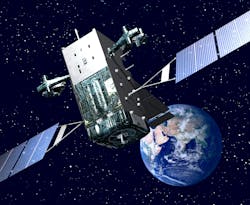Military asks industry for enabling technologies in space-based optical communications and target tracking
CHANTILLY, Va. – U.S. military space experts are reaching out to industry for new kinds of space-based optical communications, navigation, target tracking, and similar capabilities for the warfighter.
Officials of the Officials of the U.S. Space Development Agency (SDA) in Chantilly, Va., have released a broad agency announcement (FA240124S0001) for the Systems, Technologies, and Emerging Capabilities project.
This space technology project is looking for new enabling technologies in efficient beyond line-of-sight data transport and warfighter communications; advanced and alternate position, navigation, and timing (PNT); advanced target custody, warning, tracking, and defeat; and global battle management.
From industry, SDA officials are asking for architecture studies, concepts of operations (CONOPS), modeling and simulation, system designs, key technologies, and risk-reduction prototypes related to these capabilities.
Efficient beyond line-of-sight data transport and warfighter communications features capabilities that enable global access to low-latency communications and space data transport for joint warfighting systems.
These capabilities involve enabling technologies in small lightweight free-space optical communications terminals that can operate at low, medium, and geostationary orbits and handle space-to-space, space-to-air, space-to-ground, and space-to-maritime applications.
In particular, SDA experts are looking for emerging capabilities to improve modem performance, increase data rate, reduce optical communications terminals acquisition time through automation, and reduce complexity and manufacturing requirements.
Enabling technologies of interest include photonic integrated circuits; small lightweight terrestrial optical communications terminals; transportable optical ground stations; and simple low-cost ways to mitigate atmospheric effects on optical links.
Advanced and alternate position, navigation, and timing (PNT) seeks to enable global operations in GPS-denied or -degraded environments. Enabling technologies of interest include ranging and precise time transfer via optical inter-satellite links, as well as systems and algorithms that enable precise range measurements with free-space optical communications with precise nanosecond time transfer.
Advanced target custody, warning, tracking and defeat seeks to detect, track, target, kill, and conduct battle damage assessment detection, tracking, targeting, and kill/battle damage assessment of enemy missiles, surface warships, and submarines. This also involves space-based sensors for environmental monitoring; , space domain awareness; and battle damage assessment.
Enabling technologies of interest include infrared focal-plane-array sensors and sensor processing in low-Earth orbit; multi-intelligence sensor fusion using algorithms to develop and maintain targeting solutions against time- sensitive targets; electromagnetic warfare (EW) in low-Earth orbit; automatic target recognition with trusted computing, artificial intelligence (AI), and machine learning.
Global battle management includes algorithms, frameworks, and hardware for advanced processing, command and control, user interface, and architecture interoperability.
Technologies of interest include cyber defense of space data networks; open interfaces and standards; software frameworks that enable on-orbit or over-the-network reprogramming; automated dynamic networking and routing techniques; radiation-hardened and radiation-tolerant advanced processing; radiation-hardened and radiation-tolerant advanced cryptographic devices; automated scheduling and sensor tasking; multi-level security; and distributed command and control in contested environments. SDA officials say expect to award several contracts.
Companies interested should email unclassified executive summaries and abstracts no later than 1 Dec. 2024, and full proposals no later than 15 Jan. 2025, to [email protected]. Classified proposals should follow U.S. Department of Defense submission guidelines.
Email questions or concerns to [email protected]. More information is online at https://sam.gov/opp/f34e7a9d6f9d42008c7bf2874742316b/view.
